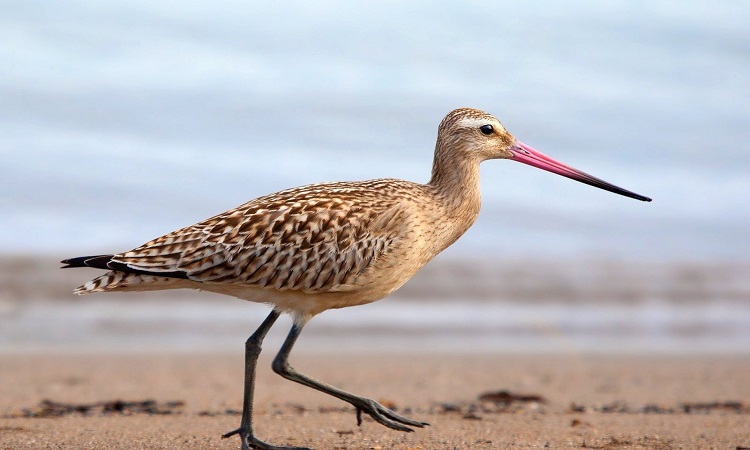A few weeks ago, a migratory bird reached New Zealand from Alaska without taking a single break. The record-breaking flight lasted eleven days.
The red-haired godwit (Limosa lapponica) is a migratory bird known to fly several thousand kilometers non-stop. These wading birds spend their summers in the arctic regions of the northern hemisphere, where they breed, then move to Australia or New Zealand for the winter. The previous record was so far held by a specimen that in 2007 traveled nearly 11,680 km on a journey from Alaska to New Zealand. This flight had been completed in about nine days. But all records are made to be broken.
Recently, the Global Flyway Network conservation group tracked a new male specimen, designated 4BBRW. According to the researchers, the bird left southwest Alaska on September 16 and finally landed eleven days later in a bay near Auckland, New Zealand. In total, this red barge would then have traveled a little over 12,200 km, crossing a large part of the Pacific.
According to Jesse Conklin of the Global Flyway Network, the bird should normally have reached New Zealand earlier. During his journey, strong winds pushed him towards Australia. This would explain why 4BBRW has covered so many kilometers. Also according to the researcher, this red barge, which would have reached a maximum speed of around 89 km / h in flight, probably did not sleep during its trip.
A bird designed like a fighter plane
We don’t really know how these birds manage to find their way over such a long distance, or how they manage to cope physically. “They indeed fly over the ocean for days and days in the middle of the Pacific, where land is absent,” said Jesse Conklin. They then arrive in New Caledonia and Papua New Guinea, where there are quite a few islands, and we might be anthropomorphic, but it really looks like these birds, spotting these lands, are like “oh , I have to start tacking or I’ll miss New Zealand”.
The researchers also point out that these birds have an incredibly efficient fuel-energy ratio. “They are designed like a fighter plane. Their long and pointed wings and their elegant design give them great aerodynamic potential ”.
Note that these birds, like many others, unfortunately, are listed by IUCN as a “near threatened” species. At issue: residential and commercial development, aquaculture, oil and gas drilling, and pollution.
Finally, let us remember that if the red barges hold the record for the longest non-stop aerial migration, the arctic terns (Sterna paradisaea) hold the record for the longest migration. Indeed, these birds travel an average of almost 80,000 km each year (although they make many stops along the way). In 2016, an arctic tern would have even traveled more than 96,000 kilometers, reaching Antarctica from England.




